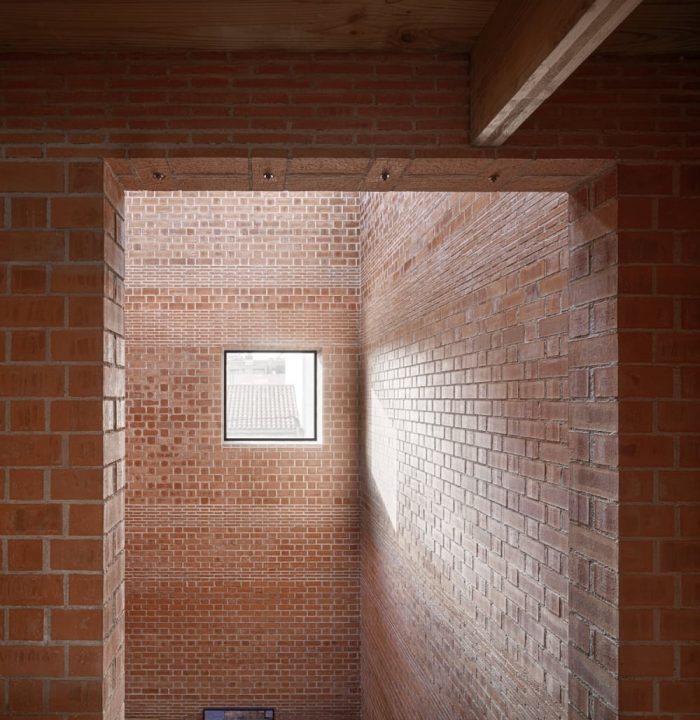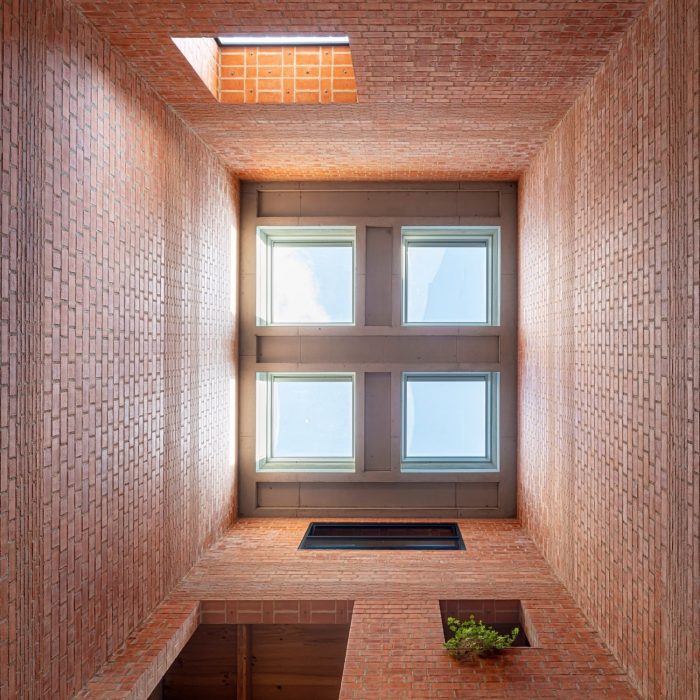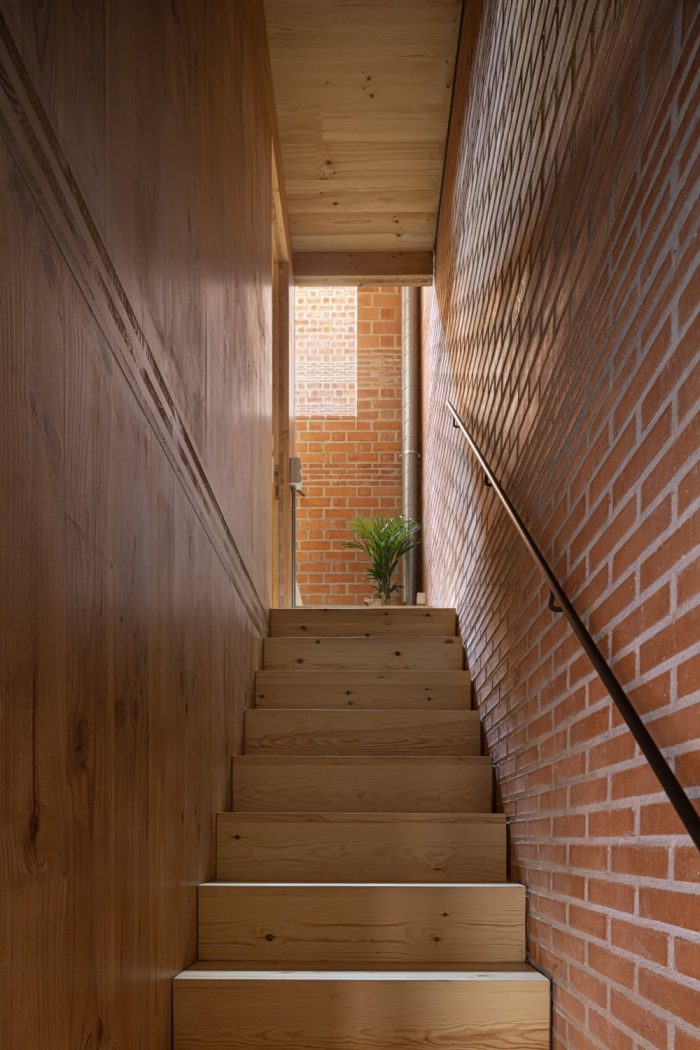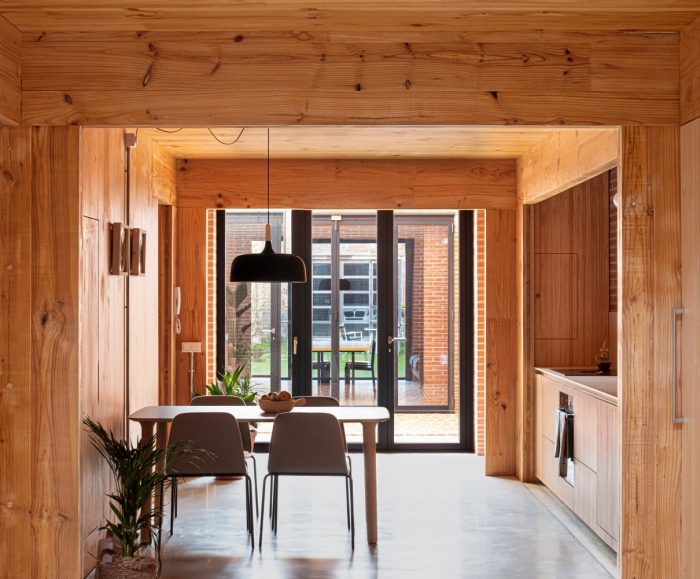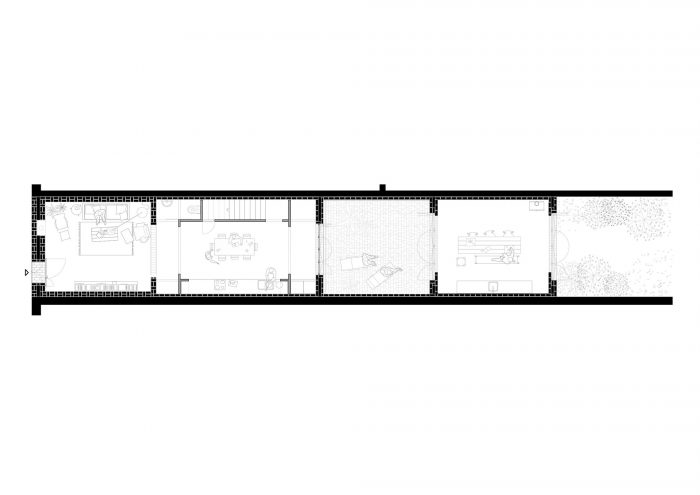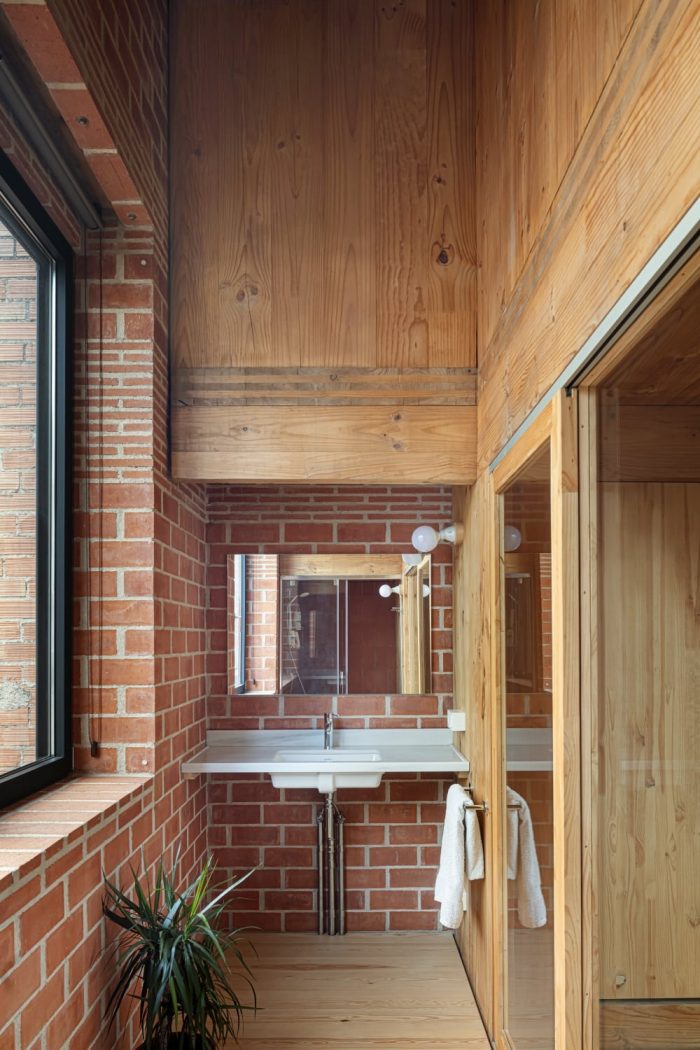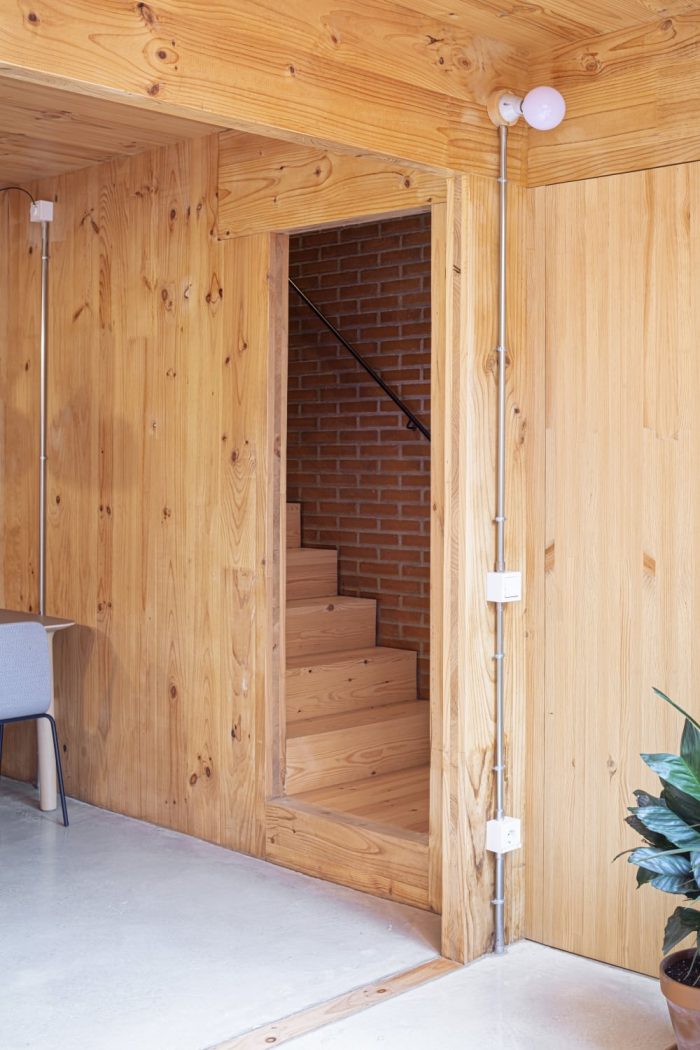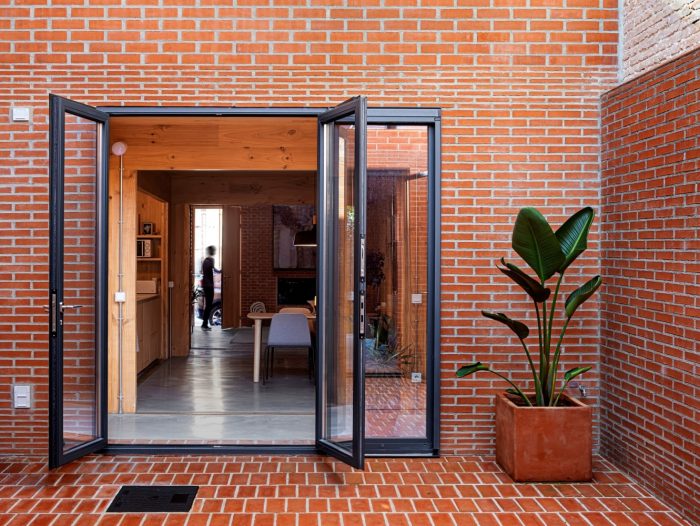这是一个位于格拉诺列斯(Granollers)的方墙之间的单户住宅项目。客户要求一个可以容纳四个不同家庭情况的房子:单独在家,与他的伴侣或与他们的孩子的不同组合。
It is a single-family house project between party walls in Granollers. The client asked for a house that could admit up to four different family situations: alone at home, with his partner or in different combinations with their children.
在项目开始时,该地块的底层被一栋房子占据,在东西方向穿过两条街道,西面的立面面向镇上的一条主要街道,因此是自然的通道区域,留下东面的道路通道,可以利用一个旧建筑作为停车场的优势。城市规划条例的应用允许在党墙之间有一个与街道对齐的体积(4.80米)。地面层加上三个高层(14.60米高),距离街道立面14米深。尽管街区内有一个宏伟的天井,但面向南方的一个相邻建筑达到了规定的高度,几乎覆盖了天井的整个长度,阻挡了一天中大部分时间的阳光。与相邻的南方建筑相比,现有建筑的高度降低了,而且其体积不符合规定,这是决定不利用它的主要原因。
The plot, occupied by a house on the ground floor at the time the project started, goes across two streets in an East-West direction, the West façade faces a main street in the town and is therefore the natural area of access, leaving the east side as a road access that could take advantage of an old construction as a parking lot. The application of urban planning regulations allows a volume between party walls (4.80 m.) aligned with the street. Ground floor plus three upper floors (14.60m high) and 14m deep from the street façade. Despite having a magnificent patio inside the block, one of the neighbouring buildings facing the south reaches the regulatory height and covers practically the entire length of the patio blocking sunlight for much of the day. The reduced height of the existing construction compared to the neighbouring South and its non-conforming volume were the main reasons why it was decided not to take advantage of it.
根据描述的条件,我们决定做一个房子,利用所有可用的高度来实现 “高于 “邻居的太阳能收集。因此,该建筑在不完成所有允许的建筑面积的情况下,达到了可能的最大体积。这成为一个部分,分为两个非常不同的部分:首先是一个非常高的垂直房间,在没有邻居阴影的情况下进行天顶太阳能采集,然后是一个有底层和三个高层的塔楼,每层都有一个房间。
Based on the conditions described, we decided to make a house that would use all the height available to achieve solar collection “above” the neighbour. Thus, the building reaches the maximum volume possible without completing all the permitted built area. This becomes a section divided into two very different parts: firstly, a very high vertical room with zenith solar capture without the neighbour’s shadow, then a tower with a ground floor and three upper floors that house a single room on each level.
垂直房间,通过屋顶获得光线和太阳能收集,在西面完全封闭,避免了这个方向的问题,特别是在夏天,并将房子关闭在主要通道的噪音和轻率的地方。由于它的尺寸,所创造的空间具有特殊的性质,它具有收集能力和独特的特点,使它成为一个可以容纳一切未被编程的房间。
The vertical room, by getting light and solar collection through the roof, is completely closed on the west façade, avoiding the problems of this orientation, especially in summer and closing the house to the noise and indiscretion of the main access street. The space created is of an exceptional nature due to its dimensions, it has collecting capacity and unique characteristics that make it a room to accommodate everything that is not programmed.
下一个情节是房间的 “塔”。在一楼和客厅的旁边,它将容纳餐厅和厨房。一楼将是主人的房间,下面将是女儿的房间。第四层和最后一层将为客人准备。这种配置允许根据用户的数量完全占用房子的各个楼层,不会有空房间的感觉。如果一个楼层没有被占用,居民就不会感觉到它。通过每层楼有一个单独的房间,可以有交叉通风和来自花园和通道房间的两个自然光源。为了促进这种采光和通风的效果,楼梯失去了其传统的将街道空间和室内空间分开的结构凸起,并围绕着房间的柱子溶解,修改了每层的位置。因此,当上到第一层时,我们不会注意到有第二层,以此类推。楼梯所占据的区域被其他房间的补充项目所填满:浴室、衣服储藏室、床、水区……。
The next episode is the “tower” of rooms. On the ground floor and next to the living room it will host the dining room and kitchen. The first floor will be the owner’s room and the following will be for the daughter. The fourth and last floor will be for guests. This configuration allows occupying the floors of the house completely depending on the number of users, not having a feeling of empty rooms. If a floor is not occupied the inhabitant does not perceive it. By having a single room per floor, it is possible to have cross ventilation and two sources of natural light from the garden and the access room. To facilitate this effect of light and ventilation, the staircase loses its traditional structural bay that separates the street spaces from the interior ones and dissolves around the column of rooms, modifying the position on each floor. Thus, when going up to the first floor we do not notice that there is a second floor and so on. The strip occupied by the stairs is filled with the rest of the complementary program for the rooms: bathrooms, clothes storage, bed, water area…
材料-结构策略被转化为围护结构的形式–分隔墙体、外墙和收集器空间–以及家庭项目的木结构(CLT板)。第一个结构为我们提供了必要的惯性和通风,以保证建筑的正确气候功能,表现为一个绝热空间。第二种则在绝缘和空气管理的基础上产生舒适感。这种材料的双重性既可以从多功能空间也可以从家庭空间感受到,因为空洞使它们之间的通道和视野成为可能。
The material-structural strategy is translated into the form of a ceramic structure for the envelope – dividing walls, facades, and collector space – and a wooden structure (CLT panels) for the domestic program. The first provides us with the necessary inertia and ventilation for the correct climatic functioning of the building, behaving as an adiabatic space. The second generates comfort based on insulation and air management. This material duality is perceived both from the multipurpose space and from the domestic one due to the hollows that enable passage and views between them.
规定允许建造一个辅助建筑,在这种情况下,它被用作底层的延伸。一个门廊被战略性地放置,以区分两个具有不同特征的外部空间:一个天井露台和一个花园。
The regulations allow the construction of an auxiliary building that in this case is used as an extension of the ground floor. A porch is strategically placed to differentiate two exterior spaces with different character: a patio-terrace and a garden.
Architects: HARQUITECTES
Area : 144 m²
Arquitectos : David Lorente, Josep Ricart, Xavier Ros, Roger Tudó
Colaboradora : Anna Burgaya
Ingeniería Estructural : DSM arquitectura
Instalaciones : M7 enginyers
Arquitecto Técnico : Iñaki González
City : Granollers
Country : Spain





